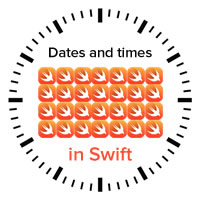
Of all the new features that come with the upcoming “2.0” version of Apple’s Swift programming language, there’s an annoying one: it breaks a lot of earlier code. I’ve been going through my more popular Swift articles and updating them for Swift 2, and now they’re ready:
How to program an iOS text field that takes only numeric input or specific characters with a maximum length: One of the most popular tutorials on this blog, this covers a way to constraint text fields so that they accept only numeric input or specific characters, and limits the number of characters they will accept.

How to work with dates and times in Swift, part one: An introduction of Cocoa’s date and time classes, and how they work together. This article covers UTC (Coordinated Universal Time), and the key classes: NSDate, NSCalendar, NSDateComponents.
How to work with dates and times in Swift, part two: Calculations with dates: Now that we’ve got the basics, it’s time to do some date arithmetic: comparing two dates to see which one is the earlier and later one, finding out how far apart two dates are, and adding and subtracting from dates.
How to work with dates and times in Swift, part three: Making date arithmetic more Swift-like: Cocoa’s date and time classes have an Objective-C heritage, which in the Swift context, feel kind of clunky. In this article, I look at ways — and by ways, I mean helper functions and class extensions — to make date calculations feel more like Swift.
How to work with dates and times in Swift, part four: A more Swift-like way to get the time interval between two dates: This quick article shows you how to make an operator overload that makes getting the time interval between two dates more like subtraction.
One reply on “My “How to constrain text fields” and “How to work with dates and times in Swift” articles, updated for Swift 2”
Hey Joey,
Thanks for updating these articles to Swift 2.0. They’re incredibly helpful.